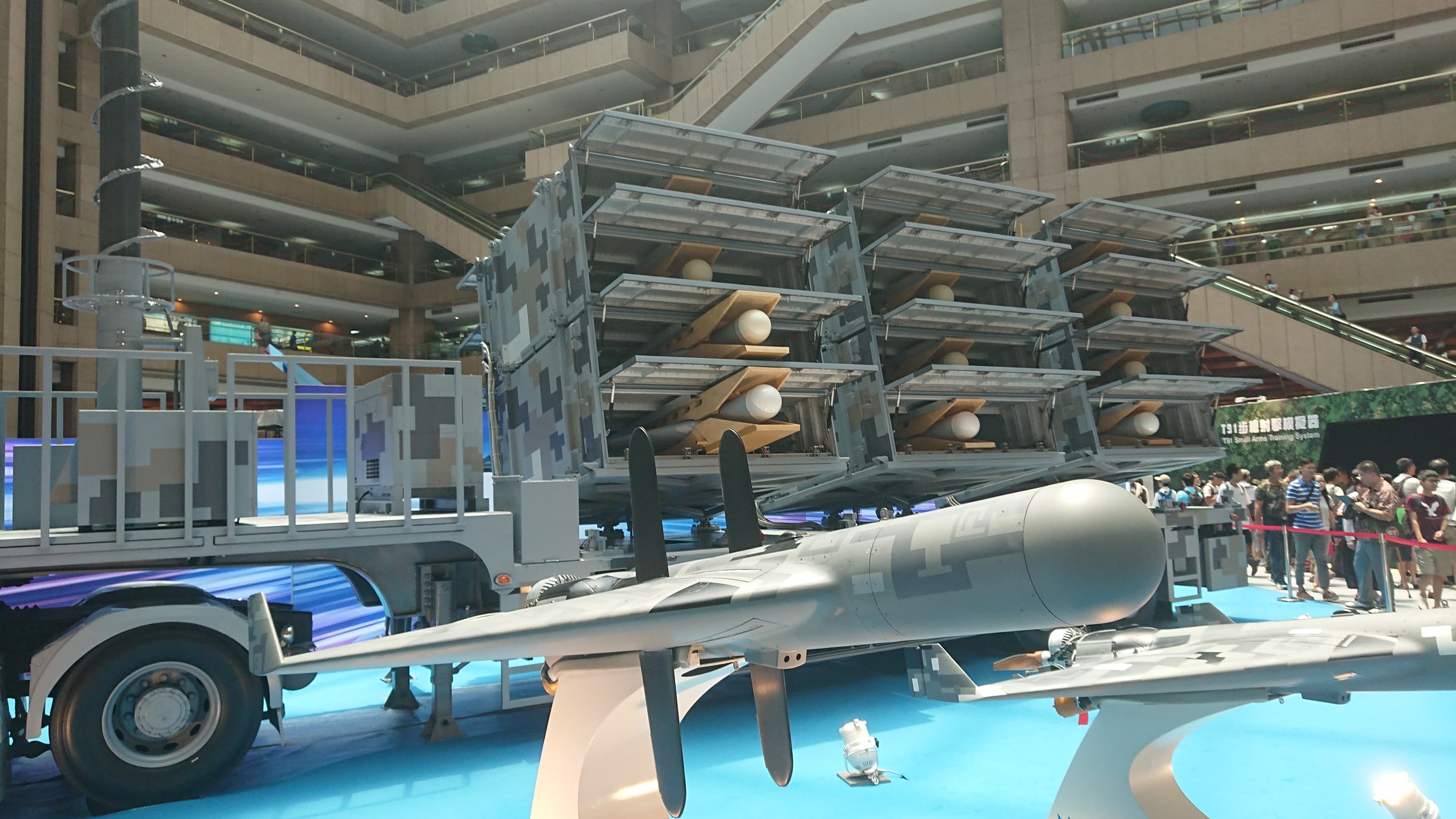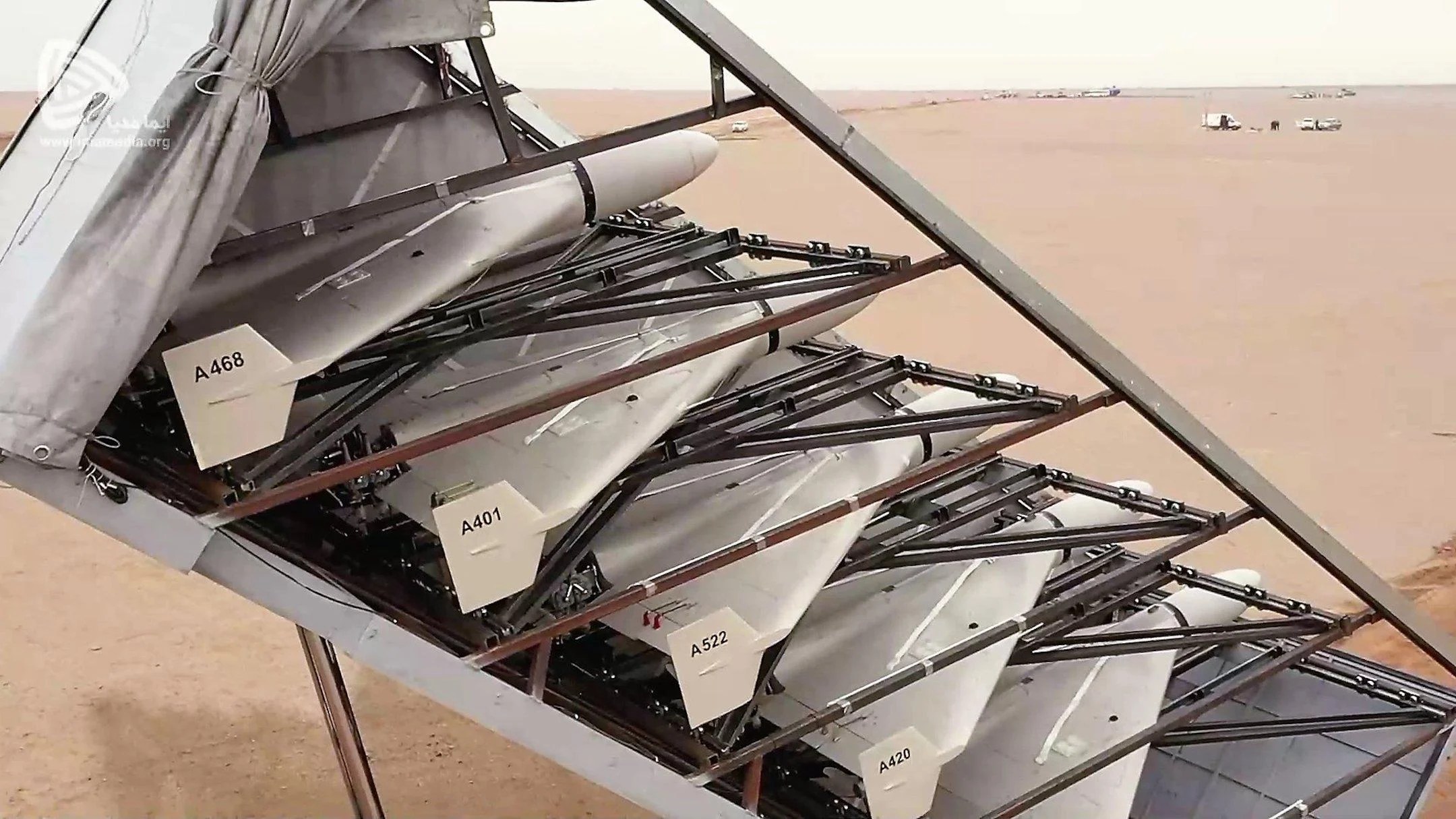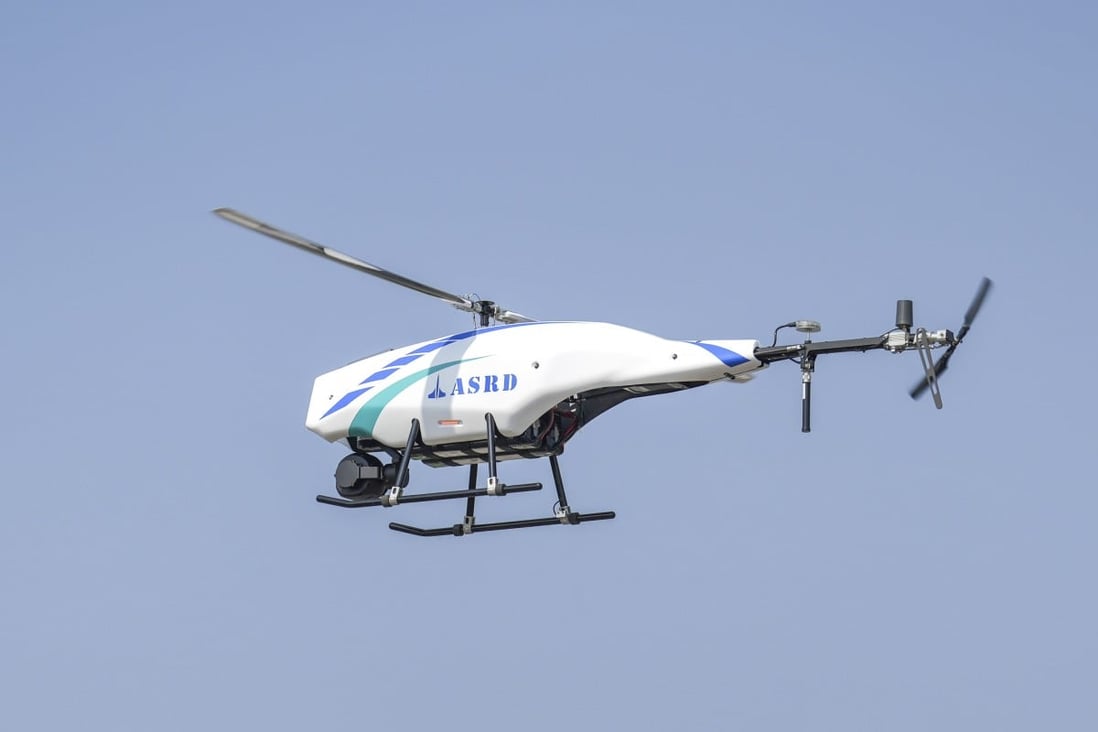With drone warfare assuming a ‘killer role’ in combat, as demonstrated in the Ukraine war, Taiwan showcased its indigenously developed combat drones amid simmering military tensions with China.
China and Taiwan are keenly watching the drones deployed for reconnaissance, surveillance, and, most importantly, for attacks in the Ukraine war.
The recently concluded Zhuhai Airshow in China became a ramp for its cutting-edge UAVs, indicating that drone warfare is only beginning to gain traction in the Indo-Pacific.
Days later, Taiwan opened the gates of its advanced drone technology display to the media to showcase its ever-growing drone capability. A variety of UAVs entrusted with an array of roles and military responsibilities were showcased by the country’s military equipment manufacturer National Chung-Shan Institute of Science and Technology (NCSIST).
The drone that caught the most attention was a vehicle-launched Chien Hsiang loitering munition or what is popularly known as a ‘kamikaze’ or ‘suicide drone’ in military parlance.
The display of this sophisticated drone system developed by NCSIST comes in the wake of the successful use of kamikaze drones by Russia against Ukraine.
Moscow has overwhelmingly deployed its Lancet drones and the Iranian Shahed-136 suicide drones to take on Ukraine and carry out precision attacks on high-value military targets.

As for Taiwan, the manufacturer counted the state-of-the-art functions that could be performed by its own Chien Hsiang loitering munition.
According to NCSIST, these indigenous anti-radiation loitering munitions are intended to destroy enemy radars stationed at sea, along the coast, or inland. It also added that these loitering munitions could destroy other UAVs.
Chi Li-ping, the head of the NCSIST’s Aeronautical Systems Research Division, revealed during a press briefing that Chien Hsiang has a maximum flight time of five hours and can strike targets roughly 621 miles (1,000 kilometers) away, as noted by Focus Taiwan.
Coincidentally, Chien Hsiang is similar in design and capabilities to the Israeli IAI Harpy UAV. Several manufacturers worldwide have used Harpy’s generic structure and design, including Iran, whose Shahed-136 drone is similar to the Harpy.

In April this year, a Taiwanese Legislative report stated that the anti-radiation loitering munition would have two variants. One drone variant will be used to destroy enemy missiles and radar bases. The second variant of the drone will be a decoy version that will be used to jam enemy radars.
When the drone was displayed in 2019, it was seen with 12 canisters loaded with one of these loitering munitions. Chi claimed that its mobile launcher allows for the simultaneous launch of all 12 Chien Hsiang drones in a “cluster” without requiring a runway.
This enables the system to launch from any location on Taiwan’s main island in a “shoot-and-scoot” fashion and transfer it to installations on remote islands as necessary. This becomes especially significant given that Taiwan is employing a porcupine strategy to counter the threat of a much superior military – the PLA.
New Light-vehicle mounting carrier Swarm weapon system with up to 18 loitering munitions in ??Zhuhai Airshow.
The system is allegedly low-cost and modular. It can perform reconnaissance, area control, precision strike, cluster strike and damage assessment missions pic.twitter.com/ryAI025eqZ
— Jesus Roman (@jesusfroman) November 2, 2022
Intriguingly, earlier this month, ahead of the Zhuhai Air Show in China, the Chinese state television CCTV aired a brief clip of a truck-mounted swarm launcher that reportedly launches about 18 drones at once. The upcoming system will reportedly function as a small, extremely mobile loitering drone swarm launcher.
Taiwan’s Display Of Drones
Taiwan has been vigorously expanding its indigenous drone manufacturing capabilities to take on the challenge posed by the gigantic enemy in its neighborhood.
Earlier this month, the self-ruled island state disclosed that it was investing a whopping $1.6 billion to develop a domestic supply chain of armed drones. The investment in drones is part of its asymmetric warfare against a powerful enemy.
Besides the Chien Hsiang loitering munition, another drone took center stage. In response to Beijing’s increasing military threats, Taiwan has showcased a brand-new helicopter-like drone for reconnaissance and surveillance operations on the battlefield, as reported by South China Morning Post.

According to institute officials, developing the new close-range tactical rotary-wing drone is intended to increase the military’s combat readiness through a real-time image transfer system and precision reconnaissance.
Its name is Capricorn, and it can fly for up to 60 minutes and be controlled from up to 30 kilometers away (18.6 miles). The institute had assisted in training more than 110 operators to enable the military to remotely operate the drones, which could do vertical take-off and landing without a runway, Chi said.
One more drone that caught the media’s attention was the Teng Yun reconnaissance drone. The drone, unveiled in 2015 and equipped with a synthetic aperture radar, is the cornerstone of Taiwan’s drone arsenal and bears an uncanny resemblance to the American Reaper drones.
According to Chi, Teng Yun might go into mass production once it passes a combat readiness assessment next year. He didn’t say explicitly whether he meant the innovative Teng Yun design or its enhanced variant Teng Yun 2, but the latter is likely the derivative set to undergo combat readiness testing given that the drone just completed a significant 10-hour test flight this summer.

The flight lasted more than ten hours non-stop and was the longest for an indigenous UCAV. The Teng Yun 2 completed the flying test just a month after it demonstrated medium and long-range flight capability and guidance control over a long-range, breaking a significant technological barrier.
The exhibit comes when China has been ramping up its combat capability and undertaking military drills that hint at its plans to occupy Taiwan. President Xi Jinping has made no bone about his intentions to forcefully reunite the island with the Chinese mainland. He recently told the military to “focus all its energy” on preparation for war.
- Contact the author at sakshi.tiwari9555 (at) gmail.com
- Follow EurAsian Times on Google News




